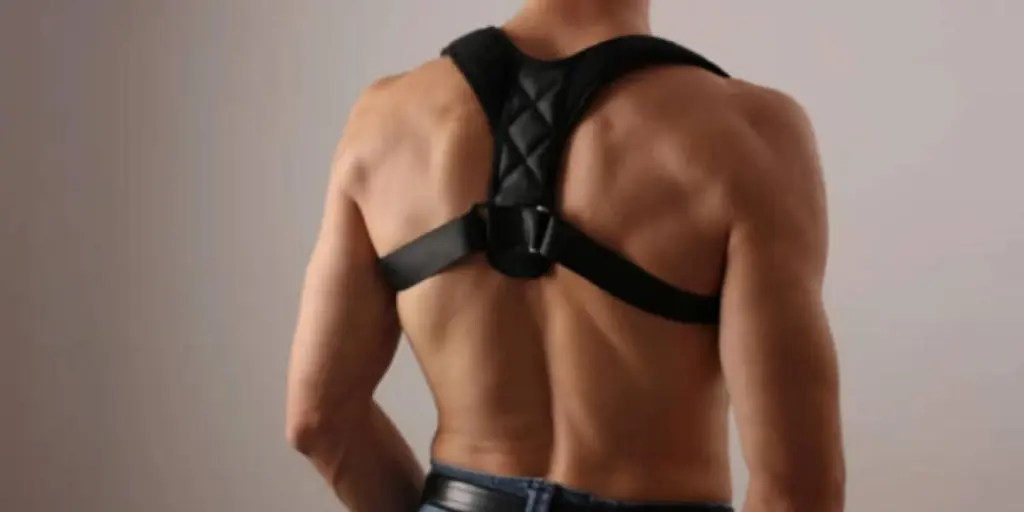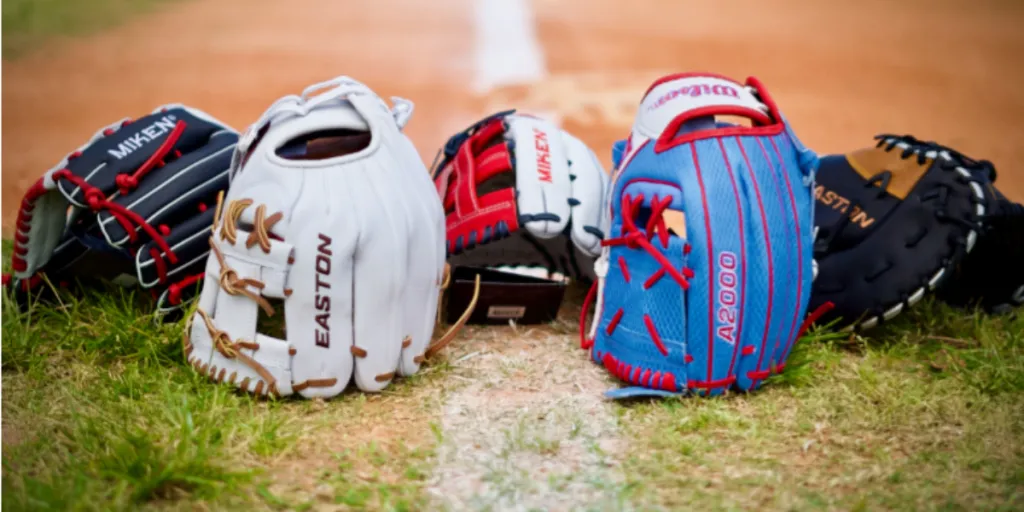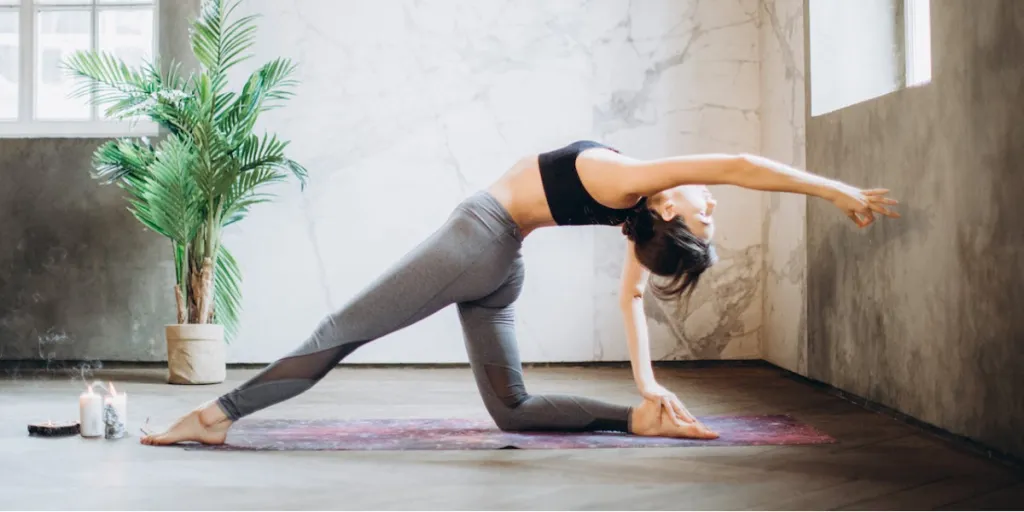In the dynamic landscape of 2024, back support products have emerged as pivotal tools in promoting health and ergonomic well-being. These products, encompassing a range of back braces and supports, are designed to alleviate discomfort, enhance posture, and provide essential spinal support. Their significance extends beyond mere pain relief, playing a crucial role in fostering a healthier, more productive environment in various settings. As these products evolve, they integrate innovative materials and designs, tailored to meet the diverse needs of users. This evolution reflects a deeper understanding of ergonomics and the human body’s needs, marking a significant step forward in personal health care and workplace wellness.
Table of Contents:
1. Exploring types and uses of back support
2. Analyzing the 2024 back support market
3. Key considerations for product selection
4. Spotlight on leading back support models
5. Conclusion
Exploring types and uses of back support

Varieties of back braces
The realm of back support products in 2024 is marked by a diverse array of braces and supports, each tailored to address specific needs and conditions. Varieties of back braces have evolved significantly, ranging from posture correctors to lumbar supports, each designed with a unique purpose. Posture correctors, for instance, are engineered to align the spine and reduce the strain on the back muscles, often caused by prolonged sitting or standing. Lumbar supports, on the other hand, focus on the lower back, providing relief and stability to individuals experiencing lower back pain, a common ailment in today’s workforce.
These back braces are not just limited to one type of material or design. Innovations have led to the incorporation of breathable fabrics, adjustable straps, and even smart technology that can monitor and adjust the brace’s support in real-time. This variety ensures that individuals can find a back brace that not only fits their specific physical requirements but also aligns with their lifestyle and comfort preferences.
Application spectrum
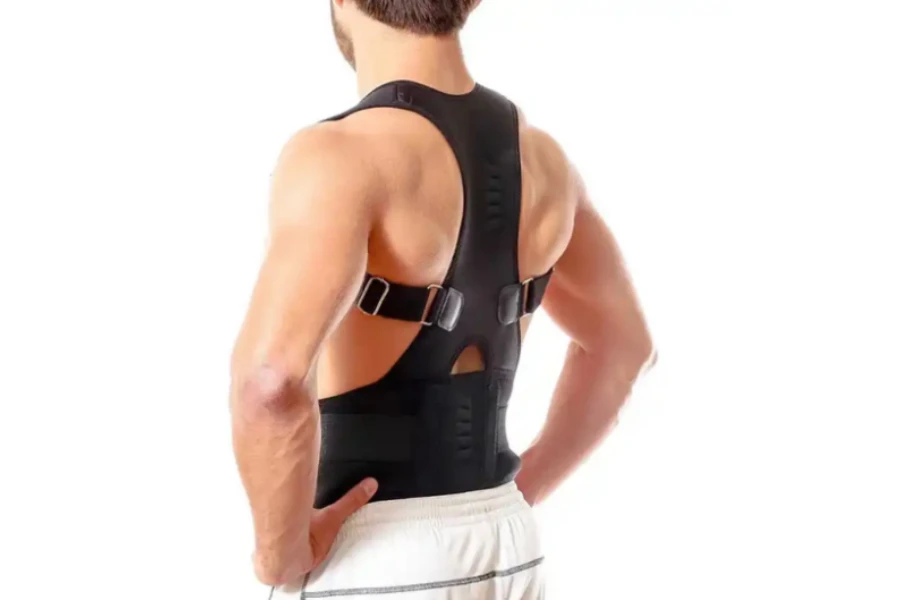
The application spectrum of these back support products extends across various environments, reflecting their versatility and essential role in daily life. In workplace settings, where employees often face the risk of musculoskeletal disorders due to repetitive tasks or poor ergonomic practices, back braces serve as a preventive measure. They provide the necessary support to maintain proper posture and reduce the likelihood of injury, thereby enhancing productivity and reducing absenteeism due to back-related issues.
In home environments, back braces find their use among individuals engaged in activities that strain the back, such as gardening, DIY projects, or even routine household chores. The comfort and support offered by these braces make them an invaluable tool for maintaining an active lifestyle without compromising spinal health.
Healthcare settings also see a significant application of back braces. Patients recovering from back surgeries or those with chronic back conditions like scoliosis or herniated discs rely on these supports for rehabilitation and pain management. The braces used in such scenarios are often more specialized, designed in collaboration with healthcare professionals to ensure they meet the specific medical requirements of the patient.
This broad application spectrum of back support products in 2024 highlights their integral role in fostering a culture of health and well-being. As these products continue to evolve, they not only cater to the diverse needs of individuals but also contribute significantly to public health by preventing back-related ailments and enhancing the quality of life.
Analyzing the 2024 back support market

Market growth and consumer trends
The back support market in 2024 is a vibrant landscape of growth and innovation, reflecting the increasing demand for products that enhance spinal health and ergonomic comfort. Market research indicates a significant expansion in the lumbar support belts sector, with a forecasted growth trajectory extending from 2024 to 2031. This growth is driven by a combination of factors, including rising consumer awareness of spinal health, an aging population, and an increase in sedentary lifestyles that contribute to back pain.
Consumer trends in 2024 show a heightened preference for back support products that offer a blend of comfort, durability, and technological integration. The market is responding to these demands with a range of products designed to cater to various needs, from medical rehabilitation to everyday use in home and office settings. The diversity in product types, such as lumbar support belts for clinical use, hospital settings, and home care, indicates the market’s adaptability to different consumer segments.
Innovations and technological advancements
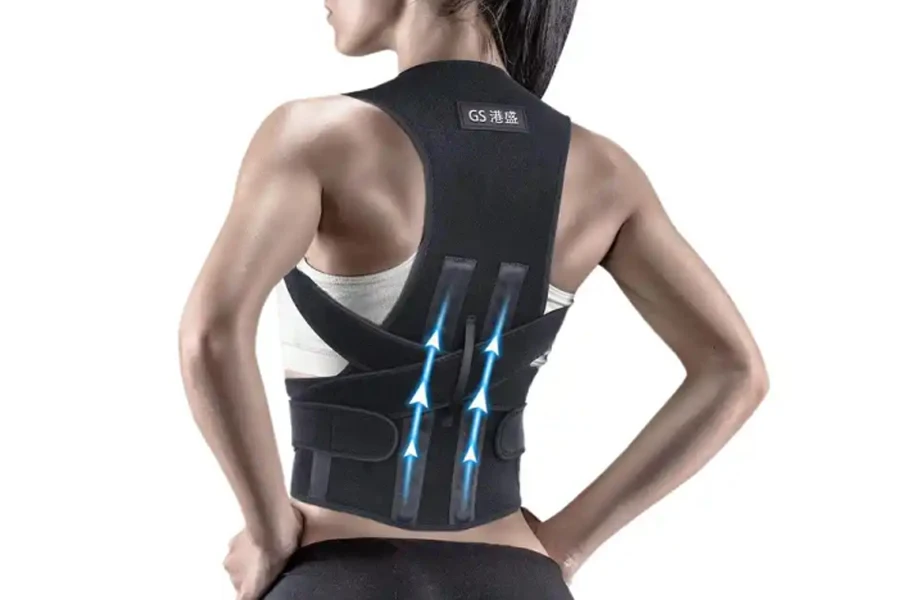
Technological advancements are at the forefront of the 2024 back support market. Innovations include the integration of smart technologies in lumbar support belts, allowing for real-time monitoring and adjustment of support levels. These advancements not only enhance the functionality of back support products but also elevate the user experience by offering personalized comfort and support. Additionally, the development of new materials that are both durable and comfortable is revolutionizing the market, making back support products more appealing to a broader audience.
The competitive landscape of the back support market is characterized by key players who are pushing the boundaries of innovation and technology. These companies are not only focusing on product development but also on strategic partnerships and market expansion to solidify their presence in the industry. The market dynamics also reflect a growing emphasis on safety and regulatory compliance, ensuring that products meet the highest standards of quality and efficacy.
In conclusion, the back support market in 2024 is a dynamic and evolving sector, marked by significant growth, consumer-centric innovations, and technological advancements. As the market continues to expand, it offers substantial opportunities for businesses and consumers alike, promising enhanced spinal health and ergonomic solutions for a diverse range of needs.
Key considerations for product selection
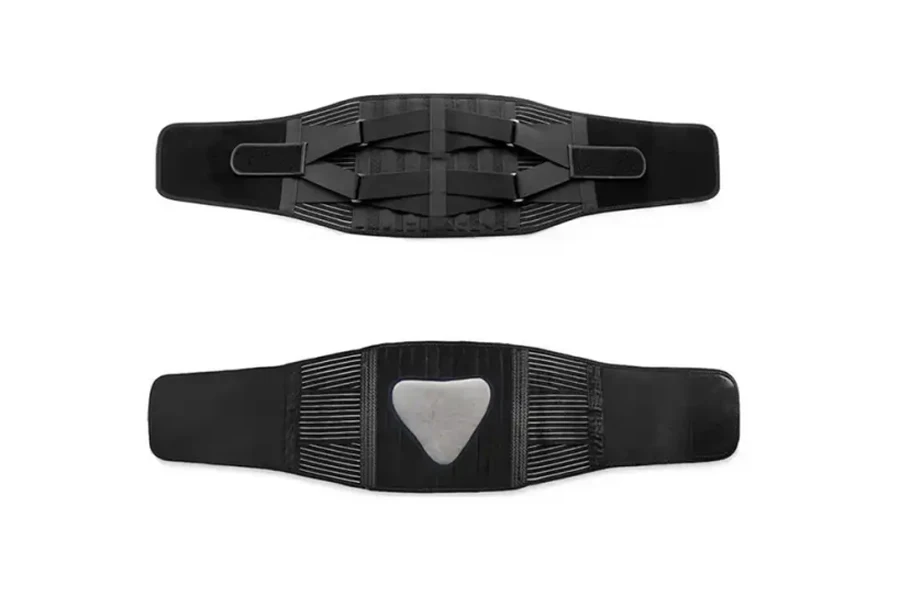
In the evolving market of back support products, selecting the right item necessitates a thorough understanding of several key factors. These considerations are crucial for ensuring that the products not only meet the needs of the end-users but also adhere to the highest standards of quality and efficacy.
Assessing material quality and comfort
When assessing the material quality and comfort of back braces, it’s essential to consider various factors that contribute to their effectiveness and user satisfaction. The material used in back braces plays a crucial role in providing the necessary support while ensuring comfort, especially during extended use.
Neoprene Blend for Lower Back Pain: The Mueller Lumbar Support Back Brace, made from a neoprene blend, targets the lower lumbar region. Neoprene is known for its durability, flexibility, and heat retention properties, making it ideal for pain relief and muscle support. However, it’s not machine washable, which might be a consideration for users requiring frequent use.
Nylon for Unisex Use: The BAXMAX Back Support, crafted from nylon, is lightweight and durable. Nylon’s strength and elasticity make it suitable for active lifestyles, providing spinal support without adding bulk. This material’s adaptability makes the brace suitable for a wide range of users, though it may not be ideal for those with wider hips due to potential discomfort.
Elastic Material for Heavy Lifting: The BraceAbility Work Back Brace for Heavy Lifting is made from elastic, offering lumbar support specifically designed for strenuous activities like construction or heavy lifting. Elastic material provides flexibility and snug fit, ensuring the brace stays in place during physical activity. However, the right size is crucial to prevent the brace from slipping.
Urethane and Elastic for Pregnancy: The SEROLA Sacroiliac Belt, utilizing urethane and elastic, targets the pelvis and lower back, crucial areas during pregnancy. These materials offer stability to the sacroiliac joints, essential for pregnant women. The belt’s design, however, may cause discomfort if tightened excessively.
Mesh Fabric for Medical-Grade Support: The Aspen Evergreen 637 LSO Back Brace, made from mesh fabric, is designed for advanced orthopedic support. Mesh fabric provides breathability and customization for individual needs and body types, focusing support on specific pain areas. This brace is particularly useful following accidents or in cases of chronic pain, though it comes with a higher price tag.
Breathability: Essential for preventing skin irritation and ensuring comfort during prolonged use.
Flexibility and Strength: Materials like neoprene or elastic mesh provide necessary support while allowing adequate movement.
Machine Washability: An important factor for users requiring frequent use and easy maintenance.
Understanding fit and adjustability for diverse body types
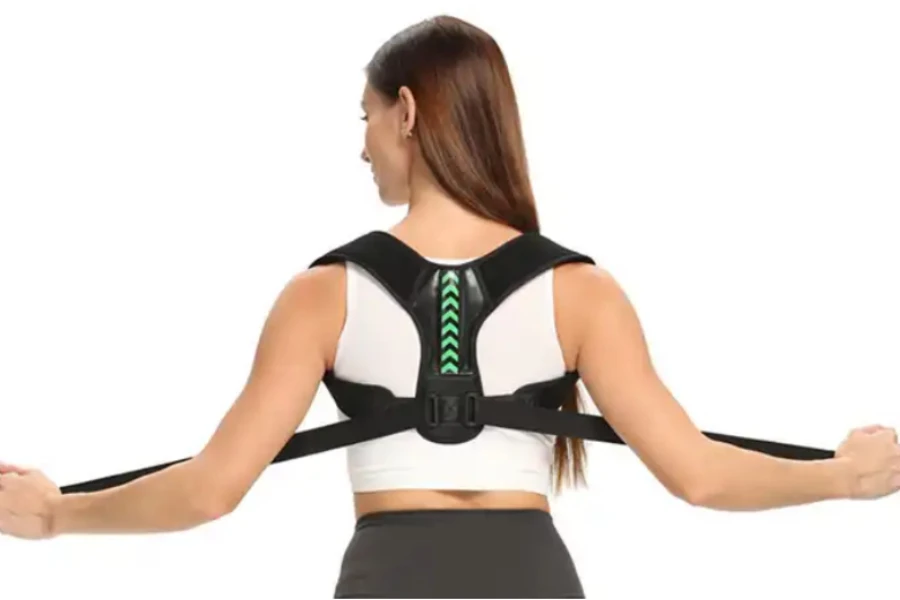
When selecting back braces, understanding fit and adjustability is crucial to cater to diverse body types. The right fit not only ensures comfort but also guarantees the brace’s effectiveness in providing support and alleviating pain.
Adjustable Straps for Custom Fit: Many back braces, like the FlexGuard, come with adjustable straps around the waist and upper back. These straps allow users to fine-tune the fit, ensuring the brace is neither too tight nor too loose. For instance, the FlexGuard’s upper shoulder straps, similar to backpack straps, help in pulling the shoulders back for better posture, while the lower back is supported by metal braces.
Sizing Variations: It’s important to have a range of sizes to accommodate different body shapes. For example, the Mueller Lumbar Support Back Brace offers various sizes, ensuring a more inclusive fit. This brace wraps around the waist, fully supporting the lower back and abdomen.
Design for Specific Needs: Some braces are designed for specific scenarios, such as the SEROLA Sacroiliac Belt for pregnancy, which targets the pelvis and lower back. Its design and material choice, including urethane and elastic, provide stability crucial during pregnancy.
Wide Coverage for Enhanced Support: Certain braces offer a wider belt design for more extensive coverage, like the belt with embedded tourmaline magnets, which aims to stimulate blood circulation while providing lumbar support.
Evaluating efficacy and safety
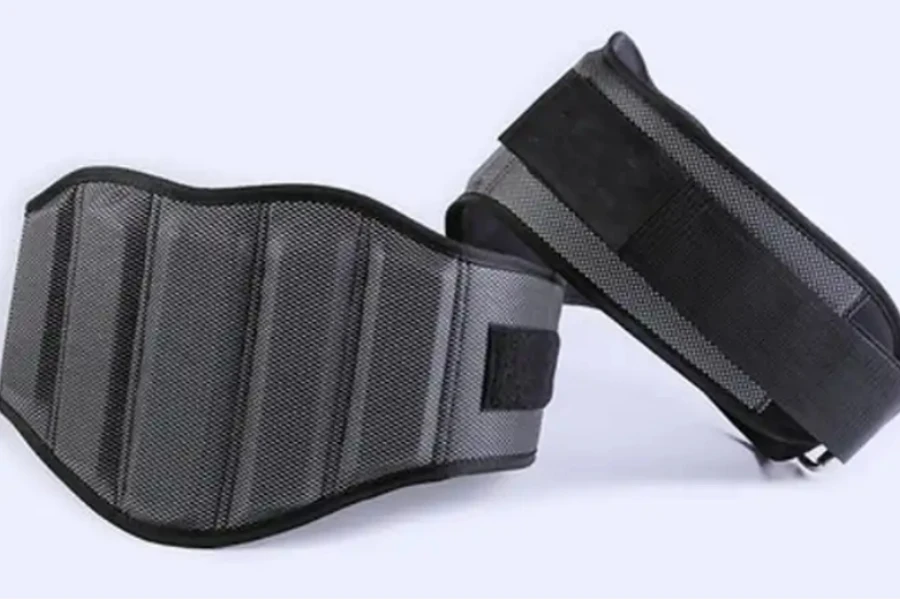
Evaluating the efficacy and safety of back braces involves understanding their therapeutic benefits and ensuring they are safe for use.
Material and Design Impact: The material and design of a back brace significantly impact its efficacy. For instance, the Sparthos Breathable Back Brace, made with breathable polyester mesh and metal supports, is designed to lower the risk of herniated discs. Its breathable material and rigid internal supports maintain the brace’s shape and provide effective support.
Specialized Designs for Specific Conditions: Braces like the Neo G’s Dorsolumbar Support Brace are developed by orthopedists to encourage correct alignment of the thoracic and lumbar spine, offering relief for conditions like scoliosis. Its material composition, including neoprene and carbon steel stays, ensures flexible yet firm support.
Considerations for Prolonged Use: It’s vital to consider the implications of prolonged brace use. Over-reliance on a brace can lead to muscle weakening. Therefore, braces should be used as per medical advice, especially in cases of chronic conditions or post-surgery recovery.
Maintenance and Hygiene: Maintenance is also a key safety aspect. Many braces are designed to be machine washable, like the Mueller Lumbar Support Back Brace, ensuring they can be cleaned regularly to maintain hygiene, especially for braces worn directly against the skin.
In conclusion, when selecting back braces, it’s essential to consider the fit and adjustability to ensure they cater to diverse body types and needs. Additionally, evaluating their efficacy and safety based on material, design, and expert insights is crucial to ensure they provide the desired therapeutic benefits without compromising safety.
Spotlight on leading back support models
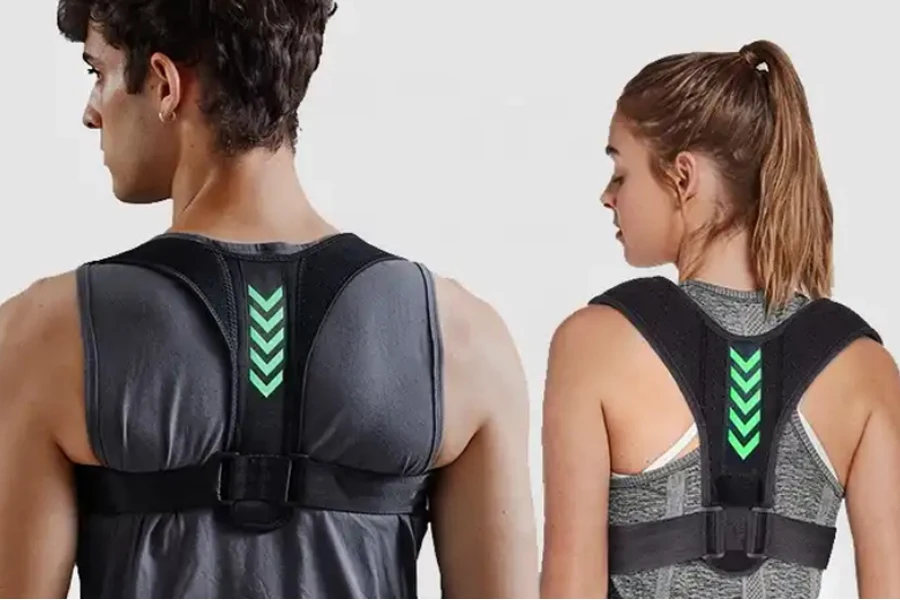
In the realm of back support, several models stand out for their efficacy, comfort, and design. This section delves into a comprehensive review of top-rated back braces, analyzing their features, durability, support levels, user experience, and value propositions.
Comprehensive review of top-rated back braces
The market for back braces is diverse, with each model offering unique features tailored to specific needs. Here’s a detailed look at some of the top-rated back braces:
Mueller Lumbar Support Back Brace: Specifically designed for lower back pain relief, the Mueller brace is a standout for its robust construction. Made from a neoprene blend, it targets the lower lumbar area, providing firm and rigid support. This brace includes a removable pad, which adds an extra layer of cushioning and support, enhancing its effectiveness in pain relief. The breathable material composition makes it comfortable for extended wear. However, users need to be mindful of sizing, as the brace’s effectiveness is highly dependent on a proper fit. It’s available in different sizes, but users should measure their waist carefully to ensure the right fit.
BAXMAX Back Support: This unisex brace is crafted from high-quality nylon, known for its durability and lightweight properties. It’s an all-purpose brace, well-suited for individuals with an active lifestyle who need occasional spinal support. The design is streamlined, ensuring it doesn’t add bulk or restrict movement, making it ideal for daily wear. However, its fit might be an issue for individuals with wider hips, as some users have reported discomfort in such cases.
BraceAbility Work Back Brace for Heavy Lifting: Tailored for those engaged in heavy lifting and strenuous physical activities, this brace is made from elastic material, providing both flexibility and strong lumbar support. Its standout feature is the reinforced lumbar support, which includes additional stays to prevent bunching up and adjustable shoulder straps for enhanced support. The brace’s design is tapered for discreet wear under clothing, and it features two reinforced side straps for adjustable support strength. However, users should be cautious about sizing, as an incorrect fit can lead to the brace slipping over the midsection.
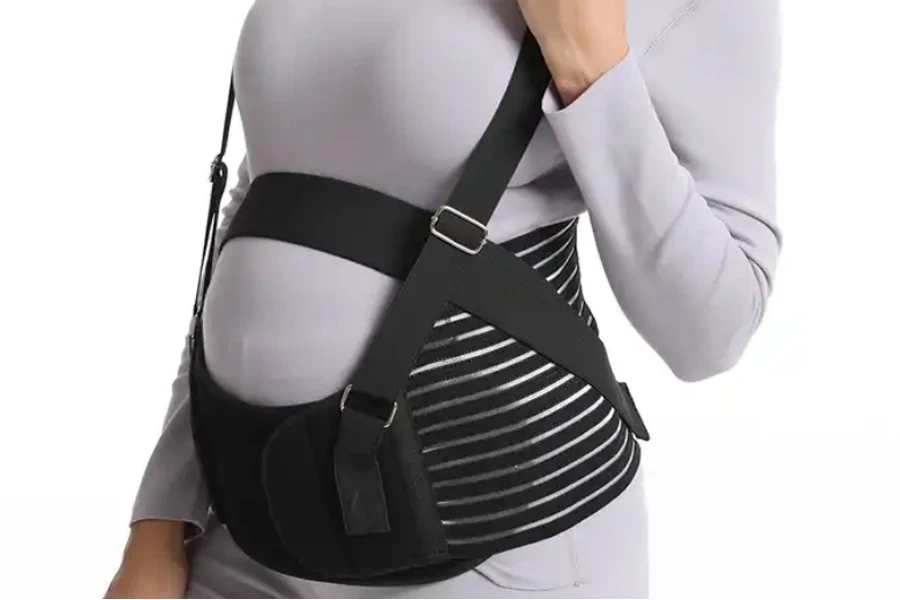
SEROLA Sacroiliac Belt: Designed with the needs of pregnant women in mind, this belt uses a combination of urethane and elastic to provide stability to the sacroiliac joints, crucial during pregnancy. The belt’s design ensures a secure fit around the pelvis, with reinforcing Velcro straps for added security. However, users should be careful not to over-tighten the belt, as it can lead to discomfort, particularly in the buttocks area.
Posture Medic: This brace is a hybrid of a posture corrector and a back brace, made from nylon and rubber. It targets the neck, upper back, and lower back, making it a versatile option for those looking to improve their posture and alleviate back pain. The brace is easy to use and is particularly beneficial for individuals who spend long hours at a desk or in front of a computer. However, there have been some concerns about the product’s durability, with users reporting issues after a few uses.
Aspen Evergreen 637 LSO Back Brace: The Aspen Evergreen 637 LSO Back Brace stands out as a premium, medical-grade option in the realm of back support. Constructed from high-quality mesh fabric, this brace is specifically designed to offer advanced orthopedic spinal support, catering to those who require more than just basic back relief. Its standout feature is its customizability, allowing users to adjust the brace to their specific body shape and comfort needs, thereby enhancing its effectiveness in providing targeted spinal support.
Each of these braces offers unique features and benefits, catering to different needs and preferences. From robust support for lower back pain to flexible braces for active lifestyles and specialized options for pregnancy, these top-rated back braces represent the diversity and innovation present in the current market.
Feature analysis: Durability, support levels, and user experience

In evaluating the leading back braces, it’s crucial to delve into specific features such as durability, support levels, and user experience. These aspects significantly influence the effectiveness and suitability of each model for different users.
Durability: Durability is a key factor, especially for users who require long-term use or engage in physical activities. The Mueller Lumbar Support Back Brace, made from a neoprene blend, is renowned for its robustness, capable of withstanding regular use without compromising its structural integrity. Similarly, the BAXMAX Back Support, crafted from high-quality nylon, offers exceptional durability, resisting wear and tear even under frequent use. These materials ensure that the braces retain their shape and support capabilities over time, making them reliable choices for ongoing back support needs.
Support Levels: The level of support provided by a back brace is crucial for its effectiveness in alleviating pain and improving posture. The BraceAbility Work Back Brace for Heavy Lifting is a prime example, offering reinforced lumbar support ideal for heavy lifting and strenuous activities. Its design includes additional stays and adjustable shoulder straps, allowing users to customize the level of support based on their activity. On the other hand, the SEROLA Sacroiliac Belt, designed for pregnancy, provides targeted support to the pelvis and lower back, crucial for the changing body dynamics during pregnancy. This specialized support is essential for maintaining stability and comfort during this period.
User Experience: The overall user experience encompasses comfort, ease of use, and the ability to wear the brace discreetly under clothing. The Posture Medic brace scores high in user experience, offering a simple yet effective solution for posture correction. Its design is easy to use and suitable for prolonged wear, especially for individuals spending long hours in sedentary positions. However, concerns about its durability suggest a need for careful handling. The Aspen Evergreen 637 LSO Back Brace, despite its higher price, excels in user experience by offering a customizable fit and advanced orthopedic support, making it a preferred choice for those seeking a higher-end back support solution.

In summary, when analyzing these top-rated back braces, it’s evident that each model brings a unique combination of durability, support levels, and user experience. From the robust construction of the Mueller and BAXMAX braces to the customizable support of the BraceAbility and Aspen Evergreen models, and the user-friendly design of the Posture Medic, these braces cater to a wide range of back support needs, ensuring users find a product that aligns with their specific requirements.
Conclusion
The landscape of back support products in 2024 is marked by a diverse array of options, each tailored to meet specific needs and preferences. From the robust durability of the Mueller Lumbar Support Back Brace to the advanced orthopedic support of the Aspen Evergreen 637 LSO, the market offers solutions for various back-related concerns. The key to selecting the right product lies in understanding individual requirements, whether it’s for heavy lifting, pregnancy support, or posture correction. This insight, coupled with an evaluation of material quality, fit, adjustability, and user experience, empowers informed decision-making, ensuring that each selection not only alleviates discomfort but also contributes positively to overall spinal health.
